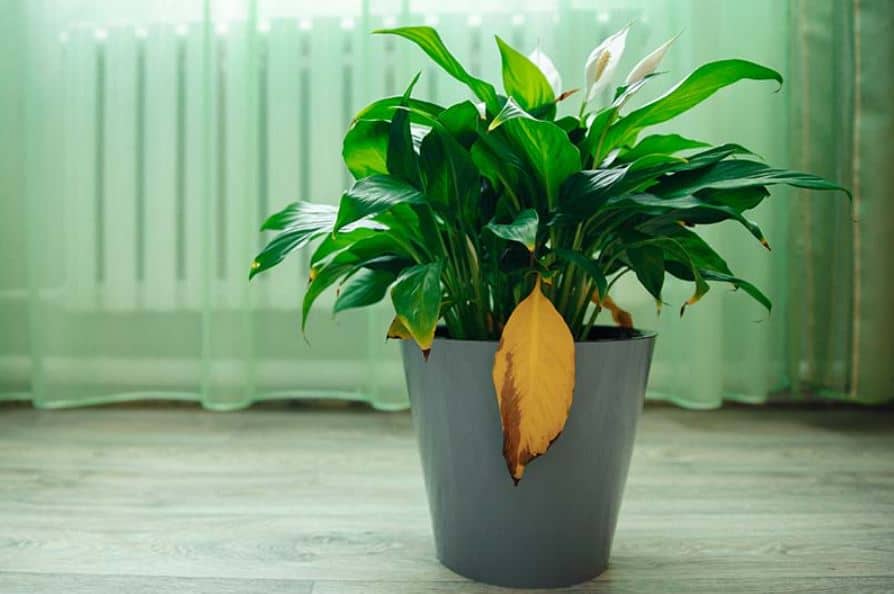The peace lily (Spathiphyllum wallisii) is a lovely indoor flower in dim lighting. It normally grows between 1 & 4 feet (31 cm and 1 m) tall and has light white blossoms with pleasant all-day smells. However, peace lilies can experience the browning or yellowing of the leaves. Find out why peace lily leaves become yellow and how to fix it by reading on.

Reasons for Brown-and-Yellow-Leaf Peace Lilies
Peace lily leaves often grow straight up and out of the ground and are long and dark green. Strong and oval in form, the leaves thin to a point at the tip. They are sturdy, and their main issue is often the need to be cleaned off occasionally since they gather dust.
However, peace lily leaves may develop sickly yellow or brown edges. It is probably certainly a water issue at its core. Both insufficient and excessive watering might contribute to this browning.
However, there is a significant likelihood that it results from mineral accumulation. Since peace lilies are often maintained as indoor plants, tap water is virtually usually used to water them. If you have hard water in your home, it can cause the soil of your plants to become too calcium-rich.
On the other hand, if you use a water softener, this mineral accumulation is just as likely to occur. While certain minerals are beneficial, an excess may accumulate around your plant’s roots and progressively suffocate them.
Brown Tips for Treating a Peace Lily
Such spathiphyllum leaf issues are often rather simple to resolve. Try watering your peace lily with bottled water if the tips are brown.
First, pour a lot of bottled water on the plant till it drains out of the drainage holes. Mineral buildup is almost certainly the cause of your issue if you can see white deposits surrounding the drainage holes since the minerals will bind with the water and wash away.
After that, water your peace lily plant as usual with bottled water, and your plant should recover without any problems. You may also remove ugly brown or yellow leaves with scissors.

